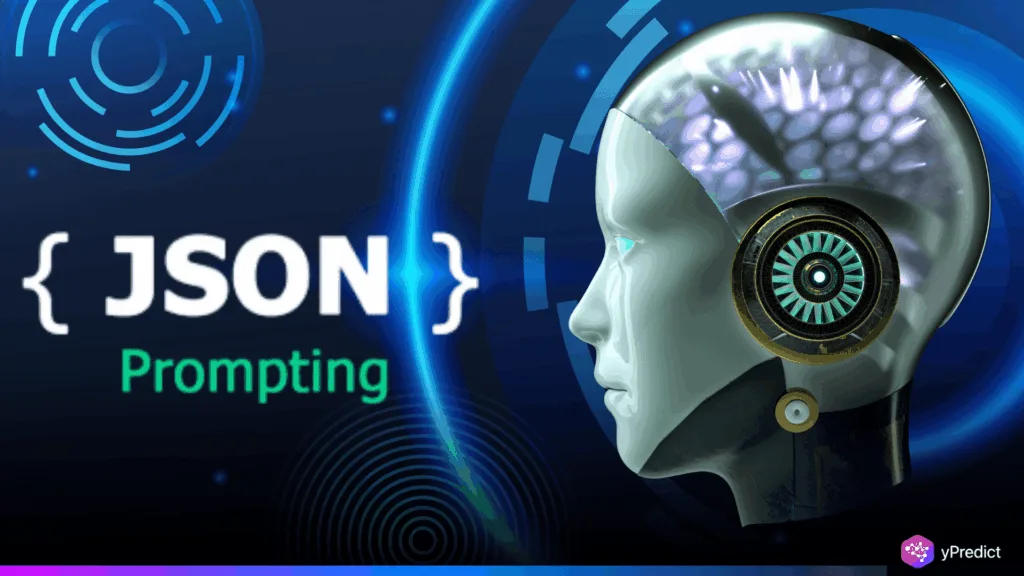
The new AI JSON prompting technique is one of the most practical AI strategies for 2025. It uses structured fields to encode instructions rather than unclear text. This change also makes it possible for models like ChatGPT, Gemini, and Claude to generate transparent, dependable, and repeatable outputs. Thus, the emphasis on format rather than freeform is quickly altering the perception of prompt engineering.
AI JSON Prompting Turns Prompts into Clear Blueprints
Traditional text prompts frequently use simple language. For instance: “Can you compose a tweet regarding dopamine detoxification?” This might work, but every attempt produces a different outcome. In contrast, structured prompts provide models with a detailed blueprint.
{
“task”: “write a tweet”,
“topic”: “dopamine detox”,
“style”: “viral”,
“length”: “under 280 characters”
}
This minor modification eliminates uncertainty. The model instantly recognizes the task, topic, tone, and duration. Experts also contend that this clarity increases dependability by reducing unnecessary back-and-forth. It feels more like programming than guesswork.
Do Structured Prompts Make AI Answers Better?
AI JSON prompting is appealing because it is universal. Claude answers with great accuracy, Gemini thrives on clear formatting, and ChatGPT interprets it with ease. As a result, structured queries are answered more intelligently by even smaller models, like Mistral.
What a student might write when asking for book recommendations is “Suggest books to improve thinking.” With JSON, the same request becomes modular:
{
“task”: “generate a list”,
“topic”: “books that improve thinking”,
“audience”: “young entrepreneurs”,
“output_format”: “markdown bullets”
}
There is a noticeable difference. Additionally, the model provides a customized, organized list in place of broad recommendations. Analysts observe that this method turns one-time inquiries into templates that can be used again in work environments.
Consultants and creators are already nesting objects inside structured prompts. For example, a Twitter thread can be divided into calls to action, insights, and hooks. Models act more like reliable agents than erratic chatbots because of this modularity, which is a reflection of software design. Additionally, it demonstrates how prompt engineering is progressing from witty wording to organized design.
Will Structured Prompts Define Tomorrow’s AI Workflows?
Experts say that chaining outputs into multi-step processes is the method’s greatest strength. The following step can receive one output as structured input, much like an API workflow. As a result, complex tasks can be completed more quickly and with fewer human edits.
Consider an early-stage founder collaborating with an AI consultant. They can clearly define deliverables instead of unclear requests:
{
“task”: “act as brand consultant”,
“client”: “early-stage AI tool”,
“goal”: “define clear positioning”,
“deliverables”: [“1-liner”, “target audience”, “3 differentiators”],
“tone”: “simple and strategic”
}
Analysts predict this method may soon be used for business reports, lesson planning, and creative projects where structure is crucial. Workplaces may use structured prompts as templates, similar to spreadsheets or slide decks, as they grow in popularity.
AI JSON Prompting Takes Prompt Engineering to Clarity
AI JSON prompting’s evolution shows a clear move away from improvisation and toward systematization. Users are now defining specific requirements rather than posing vague queries. Additionally, structured prompts provide models with a common “machine language” that ensures lucidity.
Freeform prompts will continue to inspire experimentation and creativity. However, structured approaches may become the new standard in fields that depend on accuracy. Future AI experts may write prompts more like architects than poets as prompt engineering develops. AI’s future might be based on this subtle yet potent ability.






